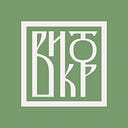Golden and silver artifacts with Slavic Vyaz inscriptions
Censer, Murom (?), 1647
Comes from the Blagoveshchensky Monastery in Murom Silver, minting, casting, carving, gilding Size: 26.6 × 15.1
This mitre is a contribution from Metropolitan Markell of Pskov and Izborosk, who was the builder of the fourth Trinity Cathedral, to the Mirozhsky Monastery. It was transferred to the Pskov Museum in 1937 from the Snetogorsky Monastery, where it had been sent from the Mirozhsky Monastery in 1805.
Dated: 1689
This chalice is made of silver and gilded. Small in size (16x16 cm), it is distinguished by the elegance of its details and quality of execution. The inscription on the rim of the chalice reads: “By the grace of God, the Tsar and Grand Prince Ivan Vasilievich, the ruler of all Russia, son of the Tsarevich Prince Feodor.
Dater: XVI century
Tankard, Moscow. Mid-17th century Silver, forging, minting, carving, engraving Size: 16 × 14 × 11.2
This small, spherical tankard (“bratina”) placed on a flat base has a restrained decoration in the form of an inscription and four figurative frames with arabesques applied with blackening. The soft velvety color of the blackening combined with the golden background creates a subtle and austere artistic harmony and beauty in the decoration of the monument.
The owner’s inscription is cut along the rim of the second tankard using the obverse technique: “BRATINA OF GOSTINYE HUNDREDS OF VASILIY MIKHAILOVICH, SON OF VOLKOV, DRANK FROM IT FOR EVERYONE’S HEALTH” (БРАТИНА ГОСТИНЫЕ СОТНИ ВАСИЛИЯ МИХАИЛОВА СЫНА ВОЛКОВА ПИТИ ИЗ[Ъ] НЕЕ НА ЗДРАВИЕ ВСЯ). Vasily Mikhailovich Volkov belonged to the highest merchant class and was a merchant of the Gostiny Dvor hundred. His name appears in merchant documents of the 1640s.
Tankards. 16th century. Silver; forging, engraving, gilding. Size: 8 x 7.5; 6x8 cm.
Small tankards were used for individual drinking, while larger vessels at fraternal feasts served as communal drinking cups. Sometimes, when filled, they were placed on the deceased’s coffin, serving as memorial cups. Gradually, like ladles, they lost their everyday purpose, becoming award vessels, and their decoration became more and more lush and heavy.
A. A. Makarova // Autumn of the Russian Middle Ages. St. Petersburg, 2018, p. 54.
Chalice, 1564.
Silver; stamping, engraving, gilding.
Size: 22.5 x 22.5 cm
Cup, Moscow. 17th century.
Silver; stamping, casting, gilding.
Size: 4.4 x 11.2 x 8.1 cm.
Along the edge of the cup, the inscription reads: “The cup of Semyon Yuryev’s son. Let every person drink from it for good health.”
Cups were vessels for wine, and in churches, they were used for warmth. In Russia, they became widespread in the 17th century. Cups and goblets were among the ceremonial dishes used for festive banquets during the days of the tsar’s name day celebrations, “state and hierarchal commemorations,” which played an essential role in the life of Russia (Decorative and Applied Art, 2008, pp. 644–645). Inscriptions around the rim of the cups echo the texts of the service for the blessing of the cup.
Cup, Novgorod. Second half of the 17th century (?).
Silver; forging, stamping, casting, carving, gilding, champlevé enamel. Size: 4 x 6.4 x 9.3 cm.
This ornate gilt cup has a double body. Its inner cup is smooth and forged. It is decorated in the center with an applied cast medallion with enamel and a cast figure of a lion lying on a floral rosette attached to its back. Around the medallion, against a black enamel background, there is an extensive moralistic inscription: “Man, do you desire earthly glory? Then you will not inherit heavenly ones. Do not be resentful, but submit to them.”
This is a description of an ornate silver cup with an external embossed bowl richly decorated with enamel and engraved in three ornamental “descents” with a heart-shaped finish. They are decorated with scrolls and floral patterns filled with opaque enamel of black, dark blue, salad, and green colors, as well as transparent turquoise and emerald-green enamel. Between the “descents,” on a densely engraved and gilded silver background, three pairs of animals and birds stand out on either side of a tree: a lion and a unicorn, a deer and a hare, birds. The inscription accompanies the scenes: “LOOK AND SEE/ AND LOVE/ DO NOT BEG”. On the outer edge of the cup, on an enamel-filled background, there is an inscription: “DRINK FROM THE CUP OF A GOOD MAN FOR HEALTH, PRAISE GOD, AND PRAY FOR HIS HEALTHY LIFE.”
Aggey Alexeevich Shepelev’s Ladle. Moscow, early 1660s
Silver, forging, gilding, carving.
Size: 16.2 x 12.1 x 33.2
Along the edge of the ladle is an inscription: “The ladle was awarded by the sovereign to Colonel Aggey Alexeevich Shepelev because he served in 168 (1660) and 169 (1661) with a boyar and a voivode under Prince Yuri Alexeevich Dolgorukiy and fought in battles against Hetman Sapieha against Polish and Lithuanian men.”
Korchik, Novgorod. Second half of the 17th century.
Stamping, casting, carving, gilding.
Size: 14.5 × 9.7 × 8.3
A shallow and elegant korchik (a small jug used for drinking) on an octagonal stepped tray, gilded inside and on the crown outside, belonged to a resident of the settlement in Novgorod, as indicated by the inscription engraved on its crown. The inscription is executed in semi-uncial (poluustav) script in two strokes on a diagonally hatched carved background: KOVSH NOVOGORODTSA POSATSKOVO CHELOVEKA STEFANA STEFANOVYCH SYNA PIT’ IZ NEGO NA ZDRAVIE I NA VESELIE BLAGODARIA BOGA (Drink from it for your health and happiness, while glorying the God).
Plate. Germany. 1580–1634. Author: Master Hans Antoni Lind Silver; minting, engraving, gilding
Size: 3.5 x 33.0 cm
Weight: 773.0 g; silver standard 875
To the next article
To the table of contents.
